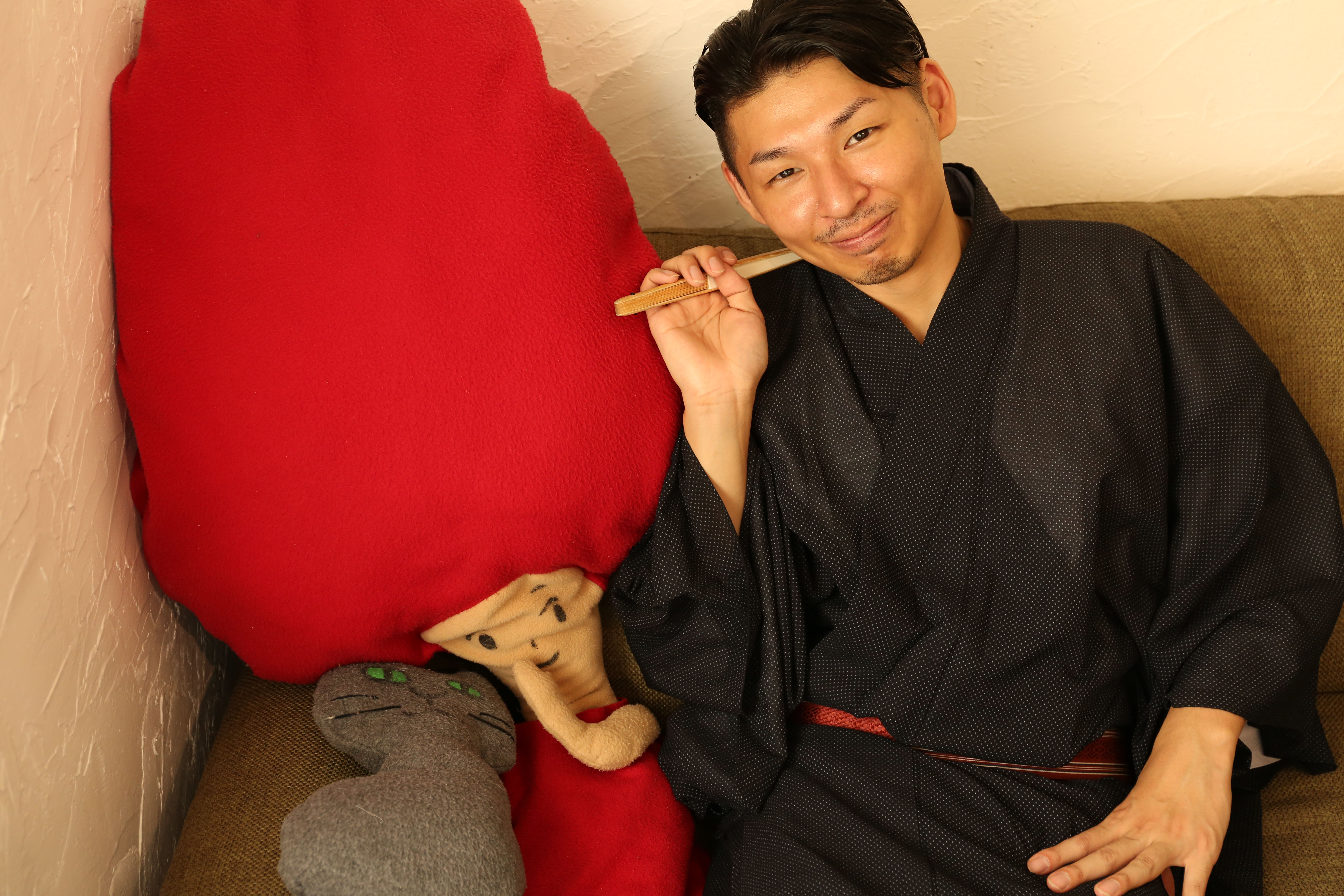The midday sky swirls with typhoon clouds as I set off to explore a little shopping area known as Tabata Ginza in Tokyo's Kita Ward. I'm thrilled to be in the charismatic company of a third-generation rakugoka (traditional storyteller) who lives nearby. I met Mikio Katsura, 32, by chance in Tabata last month, and he has kindly agreed to give me an insider's tour of the area.
Katsura and I meet up at the western edge of the shopping area, a 15-minute walk southwest of Tabata Station. At first, we seem to just follow our noses toward a delicious fragrance issuing from bread shop Kawamura. Plump brown-crusted loaves cool on outdoor racks, advertising their sweetness in the breeze. If there are people tending the bakery, though, I can't see them. Gazing at Kawamura's sign, done in magic marker on Styrofoam under an awning of candy-corn colors, I begin to glean the area's unpretentious vibe.
Katsura nips down a thin alleyway and points out an old home painted hippy-style with fish and blue waves on the exteriors. Maruike House, as the 60-year-old abode is known, is "maybe open," Katsura says, laughing. The door to the first floor entrance is, at any rate, propped ajar by a dehydrated plant in a pot. Creeping inside, we find a darkened corridor of six dorm-like rooms, all closed. A row of green metal mailboxes suggests the existence of ateliers and tiny shops, most with late afternoon or weekend visiting hours. Nothing stirs now, though; it's too early. Undaunted, Katsura climbs the outer stairs to the second floor, and I follow. There, inside shop Kimono Mamesaku, owner Yukiko Takahashi, 42, seems as thrilled to see us as we are her.



